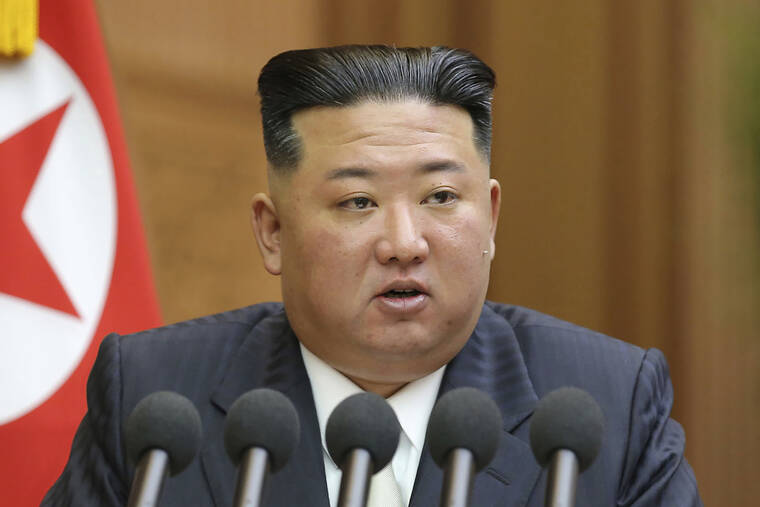State emergency officials assured the public that there was no threat to Hawaii after North Korea shot a missile into the sea off Japan this afternoon — a launch that prompted the Japanese government to broadcast an alert to its citizens.
Hawaii Emergency Management Agency tweeted at 12:55 p.m. today, “No threat to Hawai’i: News reports indicate a ballistic missile was launched from North Korea toward Japan, and has now fallen into the Pacific Ocean. Authorities in Japan alerted the public and advised they take shelter. At this time NO threat to Hawai’i is anticipated.”
The Japanese prime minister’s office said at least one missile fired from North Korea flew over Japan and splashed down in waters to the east of Japan.
At 1:25 p.m., Hawaii EMA tweeted, “NHK television network is now reporting that Japan’s Coast Guard has confirmed that the projectile has fallen into the ocean. The network is airing a statement about the incident by Hirokazu Matsuno, Japan’s Chief Cabinet Secretary.”
The Japanese government had earlier broadcast a notice to the Japanese public that a North Korean missile was heading toward the northern part of the country.
“A missile has been launched, a missile has been launched,” were among some of the warnings read by broadcasters with television screens only showing a black screen with white text, according to Bloomberg News. It warned residents of less-populated areas of some remote islands — part of Tokyo as well as Hokkaido and Aomori prefectures — to take shelter from a missile fired from North Korea.
Japanese authorities alerted residents in northeastern regions to evacuate buildings in what was reportedly the first such alert in five years. Trains were temporarily suspended in Japan’s Hokkaido and Aomori regions before their operations were resumed after a government notice that the missile appeared to have landed into the Pacific.
The launch is the fifth round of weapons test by North Korean in the past 10 days in what was seen as an apparent response to military drills between South Korea and the United States. North Korea views such drills as an invasion rehearsal.
Japanese Prime Minister Fumio Kishida told reporters that “the firing, which followed a recent series of launches by North Korea, is a reckless act and I strongly condemn it.”
Matsuno said the missile landed in waters outside the country’s exclusive economic zone after a 22-minute flight.
Trains were suspended in the Hokkaido and Aomori regions until the government issued a subsequent notice that the North Korean missile appeared to have landed into the Pacific.
Japanese Chief Cabinet Secretary Hirokazu Matsuno said no damage was immediately reported from the missile.
South Korea’s Joint Chiefs of Staff said it detected the missile being fired from the inland north in North Korea. It said the South Korean military raised its surveillance posture and maintained its readiness in close coordination with the United States.
South Korea President Yoon Suk Yeol said the missile’s range is 2,485 miles, which places Guam within striking distance.
Yoon said he called a National Security Council meeting to discuss the launch and that the North’s “reckless nuclear provocations” would meet the stern response of the South and the broader international community.
The launch is the fifth round of weapons tests by North Korea in the past 10 days in what was seen as an apparent response to bilateral military drills between South Korea and the United States and other training among the allies including Japan last week.
The missiles fired during the past four rounds of launches were short-range and fell in the waters between the Korean Peninsula and Japan. Those missiles are capable of hitting targets in South Korea.
North Korea has test-fired about 40 missiles over about 20 different launch events this year as its leader Kim Jong Un vows to expand his nuclear arsenal and refuses to return to nuclear diplomacy with the United States.
Some experts say Kim eventually would try to use his enlarged arsenal to pressure Washington to accept his country as a nuclear state, a recognition that he thinks is necessary to win the lifting of international sanctions and other concessions.
On Jan. 13, 2018, Hawaii EMA made international news when it mistakenly sent a false missile alert warning to cell phones throughout the state, prompting confusion and panic until the error was officially corrected 38 minutes later. The false alarm came at a time when Kim was threatening the United States with his nation’s nuclear missile capabilities.
Bloomberg News and Associated Press contributed to this report.






